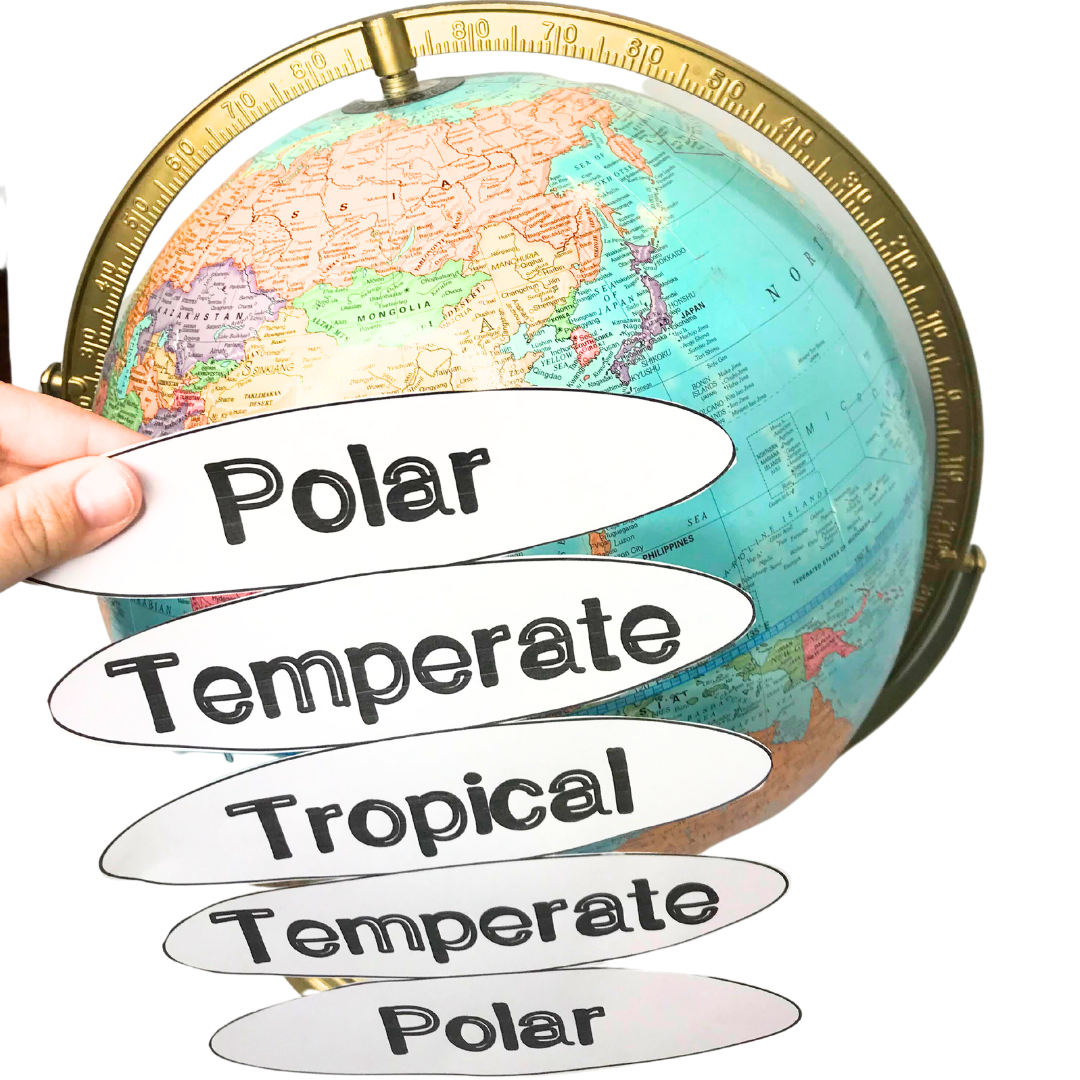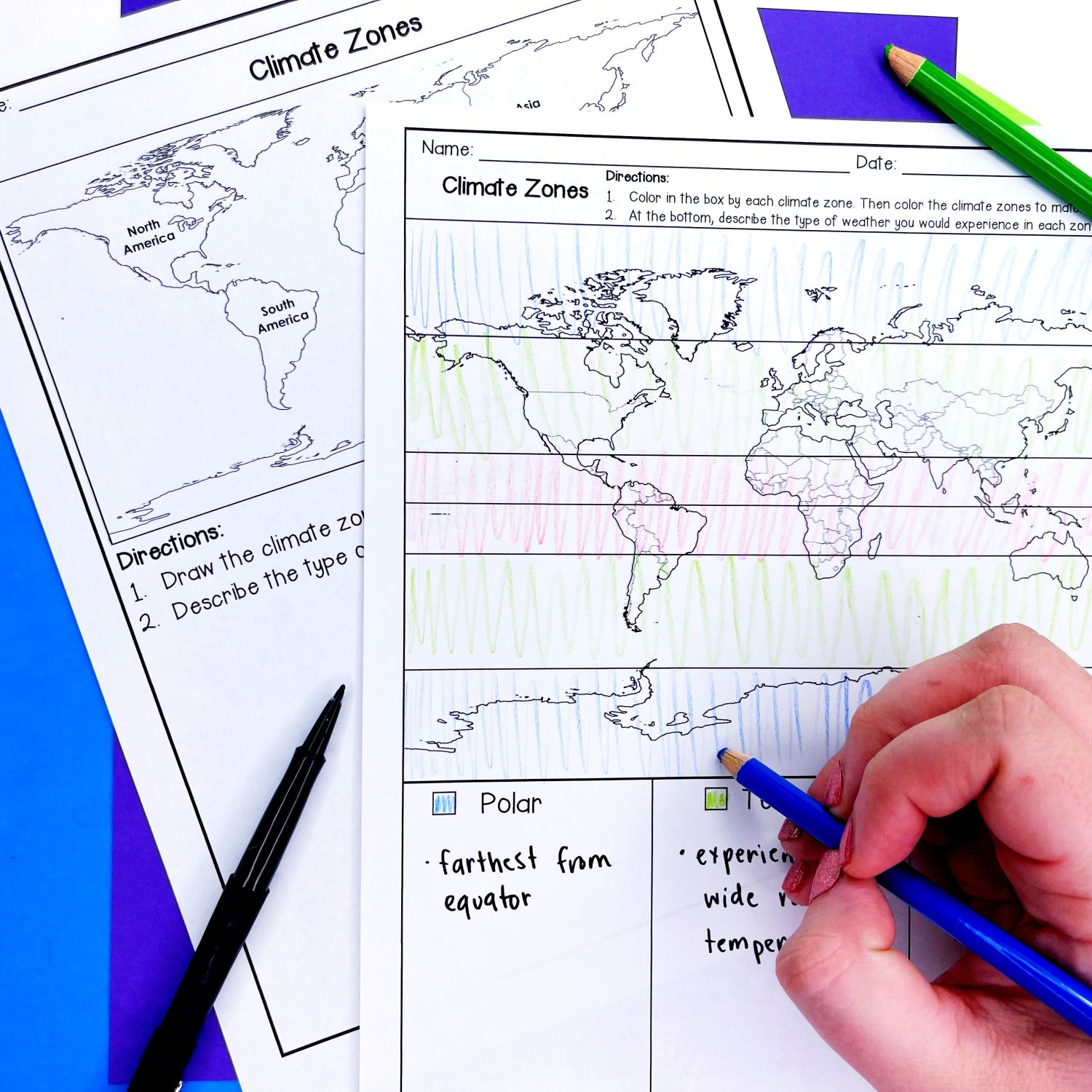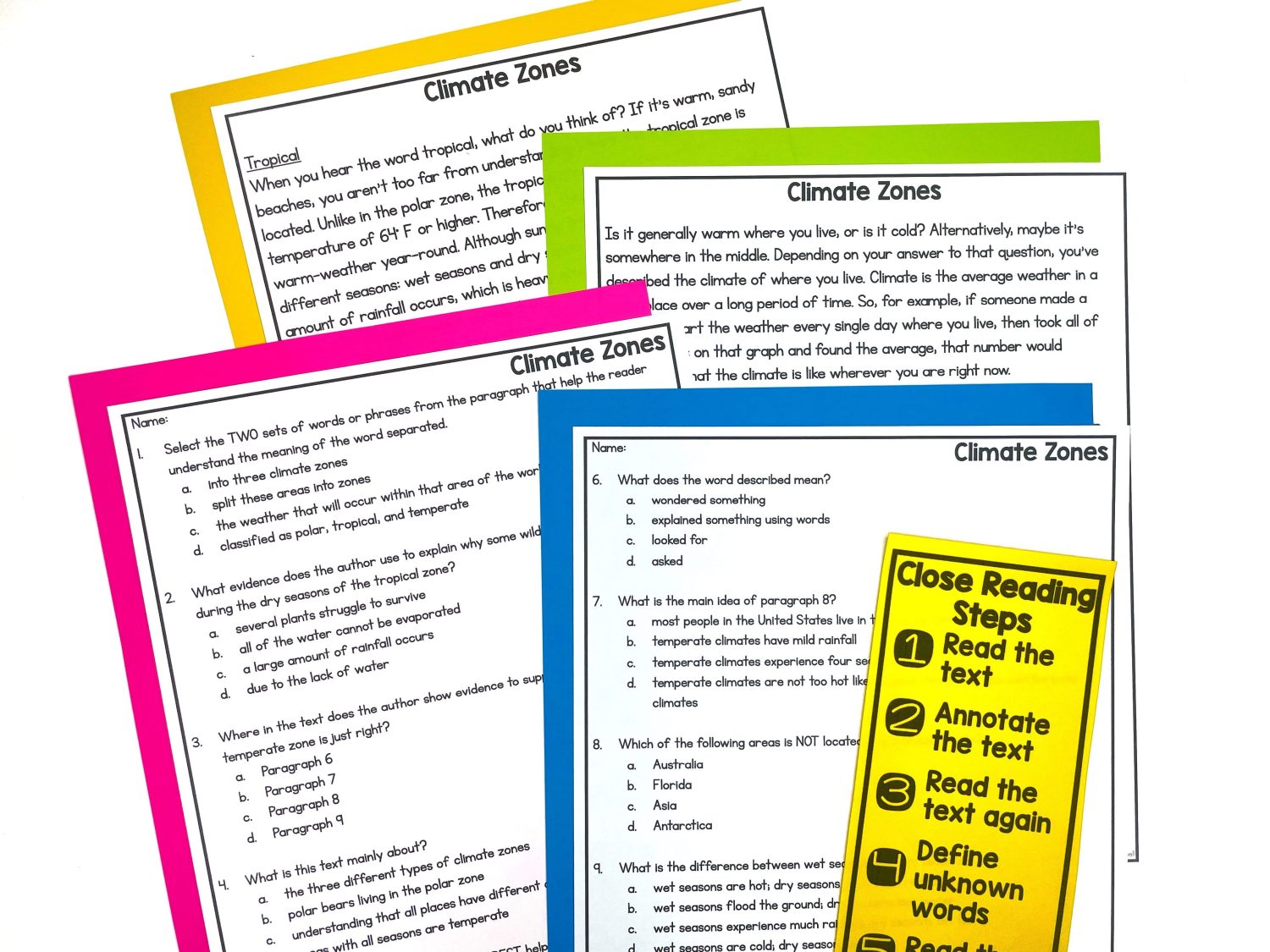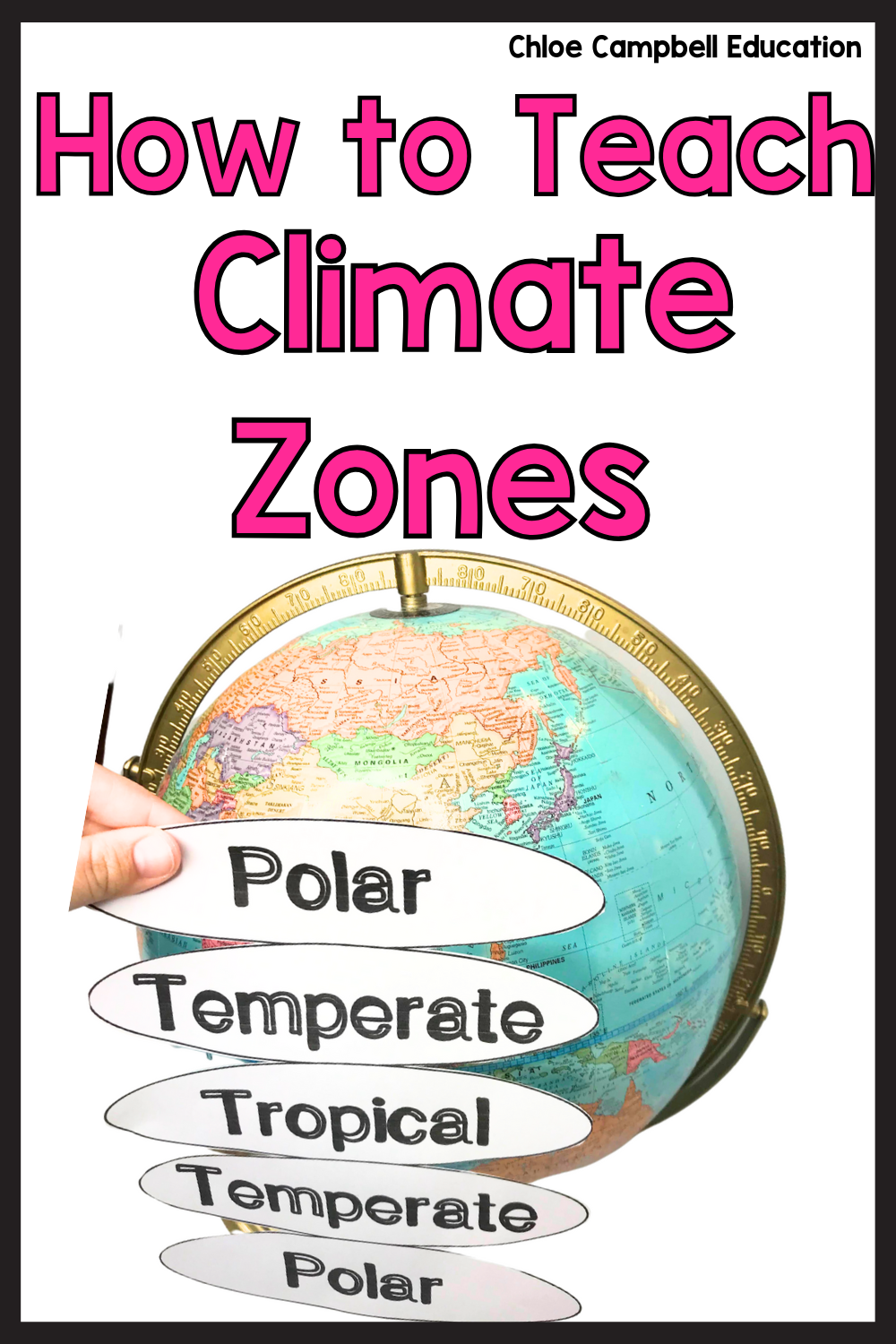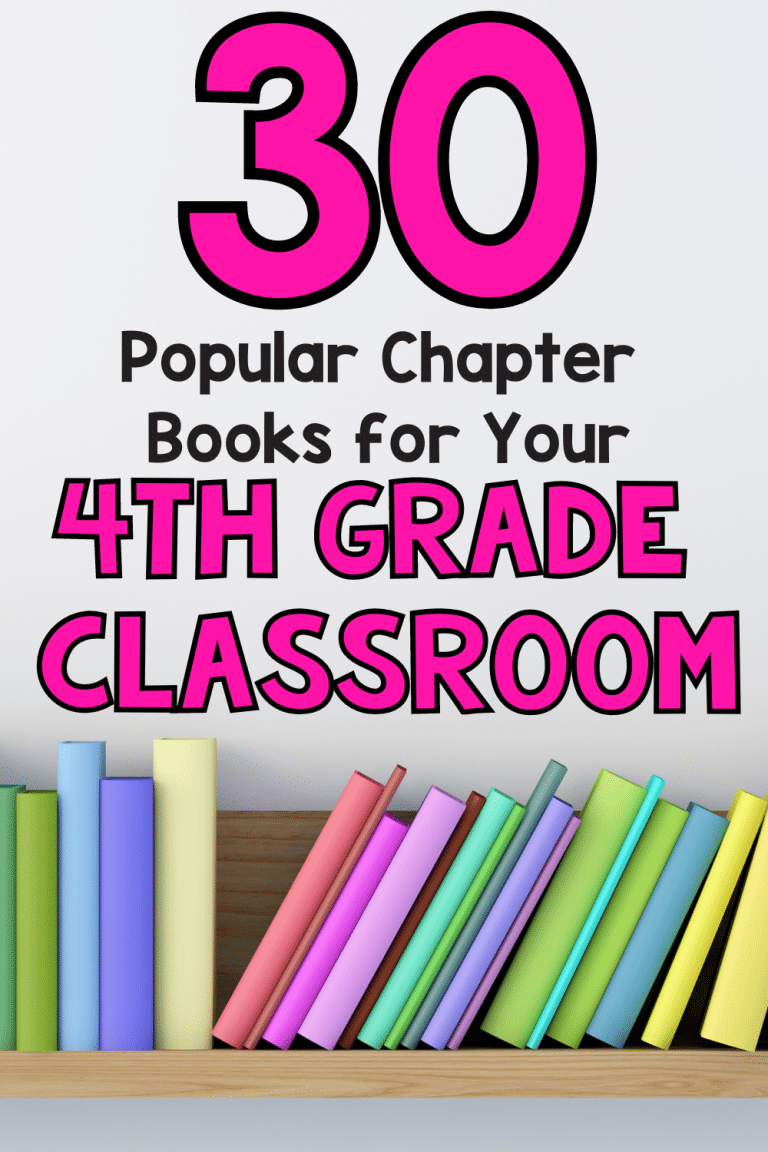Teaching Climate Zones: Polar, Temperate, & Tropical
Teaching climate zones to your students can be a daunting task, but I’m here to help! Understanding the planet’s climate zones is crucial for students, and teaching it doesn’t have to be complex. Dive into this blog post to explore straightforward and effective strategies, from practical foldable notes to color-coded worksheets. Let’s equip our students with knowledge about the polar zones, temperate zones, and tropical zones in an engaging and clear manner. Understanding ocean currents, wind patterns, and how human activities affect the world’s climate is a great way to broaden students’ learning.
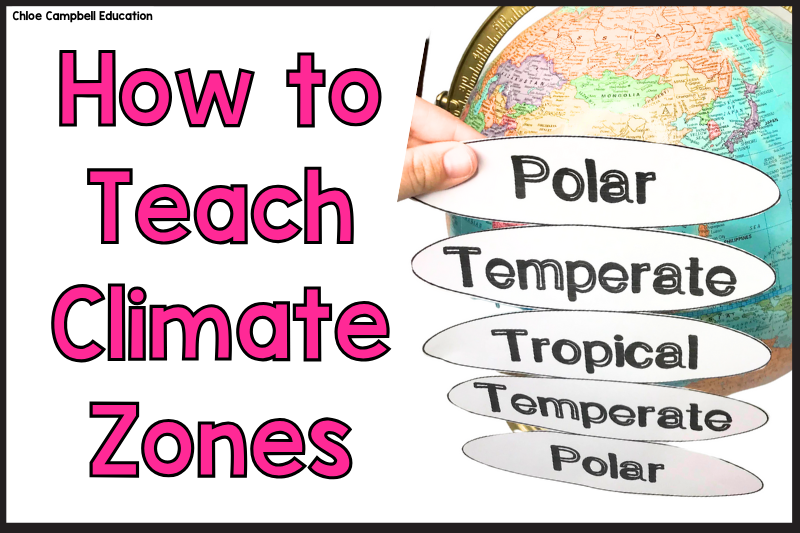
This is the third lesson of the weather unit. Check out the first lesson on types of precipitation here. The second lesson on weather tools can be found here. Below, in the chart, you’ll find an estimated timeline and each of the lessons that will be covered throughout the weather unit.
| Weather Unit Lessons | Estimated Timeline |
| Types of Precipitation | Days 1 – 2 |
| Weather Tools | Day 3 – 6 |
| Climate Zones | Days 7 – 8 |
| Types of Clouds | Days 9 – 10 |
| Review Weather Unit & Assessment | Days 11 – 15 |
Materials You Need:
- Climate Zone Graphic
- Scissors
- Globe (if available)
- Colored Pencils or Crayons
- Color Code Climate Zones Worksheet (2 versions available)
| Essential Questions | – How do the characteristics of the polar, temperate, and tropical zones differ? – How do the climate zones shape the life that is found in each of these zones? |
| Learning Goal & Objective | – Students will be able to describe characteristics of different climate zones as they relate to latitude, elevation, and proximity to bodies of water. |
| Florida Standard | SC.5.E.7.6 Describe characteristics (temperature and precipitation) of different climate zones as they relate to latitude, elevation, and proximity to bodies of water. |
| Lesson Overview | – Climate Zone Graphic – Color Code the Climate Zones Worksheet |
| Higher Order Thinking Questions | – What makes the polar zone cold? – Why is the tropical zone warm? – If you visited each climate zone, what kind of clothes would you need to pack? – How does life in the tropical zone differ from life in the polar zone? – What is your favorite climate zone? Why? – If you could pick one climate zone to live in, which would it be and why? |
Day 7 of the Weather Unit / Day 1 of Climate Zones
Start by reviewing the hands gestures that students created on Day 1 of the weather unit. Try to do this every day of the weather unit so that you keep it fresh in the students’ minds. You can also use a climate zone map to show different climates around the world, such as those in the tropical zone, temperate zones, and polar regions. Discuss how human activities impact the climate zones of the world, such as in social studies and earth sciences.
You’ll also want to save a few minutes to do the Weather Data Collection: Compare Locations activity from yesterday’s lesson.
Climate Zone Graphic
Students will begin by cutting out this climate zone graphic and bending it around a globe to visualize the major climate zones of the world. This is such a great visual for students to see the different zones and what type of weather could be seen in each.
Flip over the graphic and take notes on the backside about each zone. Include notes about the temperature, precipitation, vegetation, etc. to describe each climate zone.
Color Code Climate Zone Worksheet
Give students a copy of the color code climate zones worksheet. There are two versions available here:
- 1. For the first version, students draw the world map and label the different climate zones. At the bottom, they describe the type of weather in each zone, such as cold winters in polar regions and warm weather in tropical climates.
- 2. For the second version, students color-code the sections of the climate zone map and then describe each zone.
As a way to extend this science lesson or incorporate science into your reading time, use this climate zones close reading activity. Students can read the text, answer the ten multiple choice questions, then complete some of the included graphic organizers. There are even two bookmark style checklists for close reading steps and steps to annotate a text.
Day 8 of the Weather Unit / Day 2 of Climate Zones
Give students time to interact with the information they’ve just learned. Break them into small groups and have them create a poster about a particular climate zone. This could be a fun project to showcase the climate of the places they’ve studied, using poster boards and markers. Each group can focus on different climate zones and include features like average temperature, vegetation, and wind patterns. Students will be responsible for creating a poster or anchor chart on one of the climate zones.
You can take a few minutes to list out the expectations (similar to a rubric), by asking students what they think is important to include on the poster. With student input, you can normally lead them to include these requirements: temperature, precipitation, vegetation, show where it’s located in the world, and pictures. Sometimes, the students will get super creative and include extra things like: What should you wear? and What activities could you do outside?
Lay out markers, colored pencils, and crayons. Remind students that this should be fun but they should be focused on showing what they learned about their climate zone.
After students create their own anchor charts and/or posters, have them participate in a gallery walk. Hang the posters up around the classroom, give students a few sticky notes, and circulate around the class. Students should write something positive on a sticky note for each poster they visit. Sometimes, we can do all of this in one class period, but you could easily stretch it over two class periods. This activity not only teaches about different climates but also promotes critical thinking and collaboration.
Climate Zones Exit Slip Question Ideas:
- Which climate zone is the warmest? Why?
- Which climate zone is the coldest? Why?
- Name one animal that lives in the polar zone. Why is it suited for that environment?
- If you were going on vacation, what clothes would you pack for each climate zone?
- What would need to be different about the houses built in each climate zone?
- What climate zone do you think you want to live in? Why?
Climates in Specific Biomes
If you’re looking to teach about weather in different environments like biomes, use this Weather in Different Environments Text. Students can read the text, answer the ten multiple choice questions, then complete some of the included graphic organizers. There are even two bookmark style checklists for close reading steps and steps to annotate a text.

Looking for an Extension Activity?
For an extension, use a climate graph to teach students about patterns in average temperature across the southern hemispheres and northern hemispheres.
If you’re looking to dive deeper into earth sciences or geography lessons, consider exploring the Köppen climate classification system or creating an answer key for students’ independent work. These are excellent ways to build foundational knowledge for middle school and elementary students alike!
Love this lesson?
Get everything for the types of climate zones lesson here OR get all the weather activities done for you here!
Save this Science Lesson!
Pin these ideas to your favorite classroom Pinterest board. Then you can come back whenever you need ideas or inspiration!

